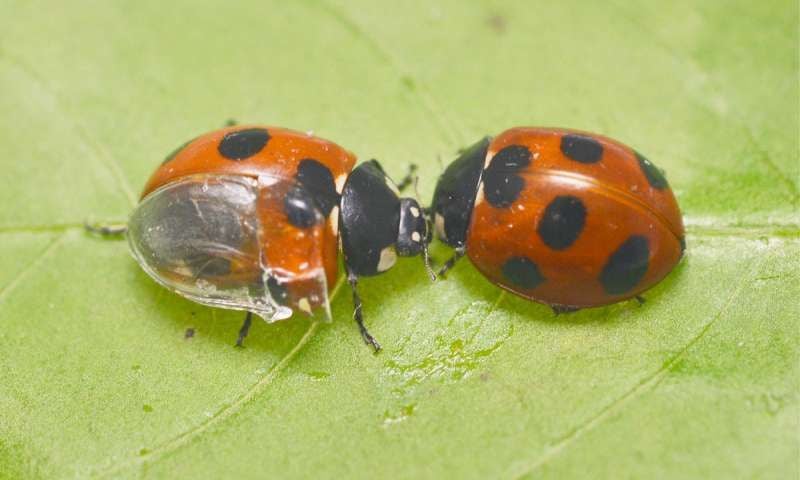The Origami-Like Folds of Ladybug Wings Could Lead to Better Umbrellas
Scientists have finally figured out how ladybugs fold their wings
/https://tf-cmsv2-smithsonianmag-media.s3.amazonaws.com/filer/9a/1e/9a1ed2b4-e8c0-4635-af0c-f7f88fc9f544/aladybug.jpg)
Ladybugs are compact little beetles, but their wings are surprisingly large when unfurled from beneath their spotted shells. And as Sarah Knapton at The Telegraph reports, researchers have long puzzled over how ladybugs can fold their wings up so tightly. So scientists in Japan decided to get a better look, replacing the spotted forewing, known as an elytron, with a transparent piece of resin. What they learned could help engineers design foldable solar collectors or even a new type of umbrella.
Kazuya Saito, Assistant Professor at the University of Tokyo’s Institute of Industrial Science, designs foldable structures—so insect wings are a natural interest. "Compared with other beetles, ladybugs are very good at flying and frequently take off," he tells Bryson Masse at Gizmodo. "I thought their wing transformation systems are excellent and have large potential for engineering.”
He and his team tried several methods to figure out how the ladybug folded its wing. They took high-speed images of the insect opening and closing its wings, but still couldn't see the actual folding process under the opaque spotted forewings. They attempted to 3D print an artificial wing, but they couldn’t make one that was transparent enough to see thorough.
As Masse reports, the researchers' secretary was the one who came up with a solution: clear nail art resin. After crafting the wing out of the resin, the team was able to observe how the insect folded and unfolded its wings.

The creatures use the edge of the elytron and abdominal movements to fold the wing along creased lines. Examination of the wings using a CT scan also revealed that they have springy veins similar to a tape measure that are rigid enough to allow the insects to fly, but elastic enough to fold up.
Saito tells Masse that the wings are unusual because “transformable structures” usually involve moving parts and joints. But the ladybug’s wing lacks those complications, completing a relatively complex task through flexibility and elasticity. The paper appears in The Proceedings of the National Academies of Science.
While the structure of ladybug wings may have applications for things like foldable solar panels for satellites and space ships, Saito seems most excited about its application to something much more domestic. “I believe that beetle wing folding has the potential to change the umbrella design that has been basically unchanged for more than 1000 years,” he tells Knapton. Collapsible umbrellas usually have multiple parts and are easily broken at the joints. But the ladybug umbrella could be made from "seamless flexible frames," he says, making it indestructible in strong wind and quick to deploy using "stored elastic energy.”
Saito admits that he doesn’t have a design for the umbrella yet, but perhaps it will look something like this.